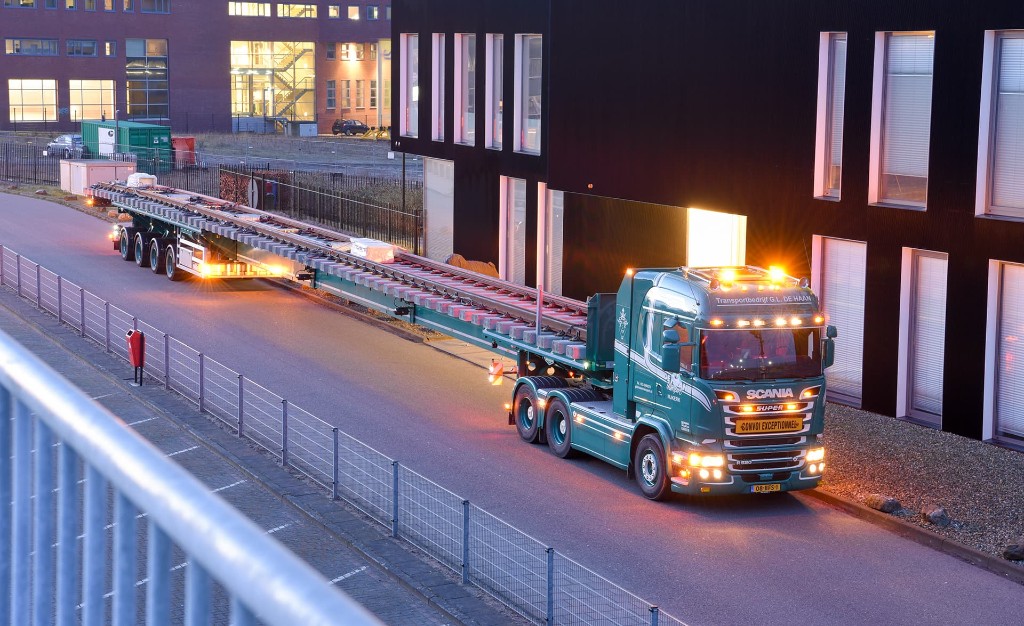Ask us
your question!
Comparing flat trailers - All types
It is named the flat trailer because the entire loading floor is flat. Flat trailers are often used for length transports. If you are looking for a flat trailer, your first question will be; How much should the trailer be able to extend? This varies between not being extendable at all up to extending 4 times. But when do you use which flat trailer?
If the load is often divisible (stones, pallets, garden timber, etc.), the non-extendable version is a good choice. The advantage of this trailer is the low tare weight. A major disadvantage of this trailer is that a longer load (for example as a return load) is not possible. For this reason, a single extendible flat trailer is chosen in such a case.
This one is not much heavier than the non-extendable variant, but it is more flexible. The single extendible trailer is often used for concrete elements, steel structures and wooden structures.
For the specific and more extreme lengths, double extendible and triple extendible trailers are used. So the reason for choosing one of these two variants is the maximum length of the load. The double extendible trailer reaches a length of almost 29 meters and is extremely suitable for piles, large steel structures, bridge parts, or tower parts/pipes.
A triple extendable (3x extendable) flat trailer can reach a length of 36 meters and is often used for extremely long piles, large concrete works and wind turbine blades.
Extendable trailer
The length of the cargo often determines how much the trailer must be able to extend. Below you can see how many meters a semi-trailer can be extended with the total maximum length that the semi-trailer will be in total.
| Number of times extendable | Length extendable | Maximum length extended |
|---|---|---|
| 0x | 0 | 13,5 meter |
| 1x | 7,5 meter | 21,0 meter* |
| 2x | 15,4 meter | 28,9 meter* |
| 3x | 22,5 meter | 36,0 meter* |
*Starting from basic length of 13,6 meters
If a trailer is extendable several times, it means that several extension beams are used. This does makes the trailer heavier. It is therefore important to keep an eye on the total combination weight and payload when choosing a trailer. Below is shown what the tare weight per trailer would be when choosing the extendability.
Tare weight and load capacity
| Number of times extendable | Length extendable | Maximum length extended | Tare weight | Load capacity |
|---|---|---|---|---|
| 0x | 0 | 13,5 meter | 10,0 ton* | 42,5 ton* |
| 1x | 7,5 meter | 21,0 meter** | 11,5 ton* | 41,0 ton* |
| 2x | 15,4 meter | 28,9 meter** | 12,3 ton* | 40,2 ton* |
| 3x | 22,5 meter | 36,0 meter** | 14,0 ton* | 38,5 ton* |
* Tonnages are indication numbers and depend on the implementation
** Starting from basic length of 13,6 meters
It is therefore ultimately about the load that is to be transported in order to opt for a specific version. There is also a lightweight variant of the flat trailer. This is only available in a single extendable version. We will not deviate from this further. You can read more about the lightweight version here.
Load floor height
Most flat trailers have a loading floor height between 1,400 and 1,450 mm. If the load is often too high, a variant with smaller tires is also available, reducing the floor height by 210 mm. If you opt for a lower variant, this is at the expense of the useful load capacity. Hereby you have to take into account that you can load less 4.5 tons.

